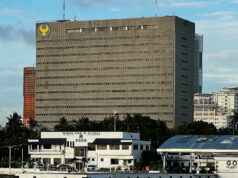Rediscount borrowings surge in Feb.
PHILIPPINE BANKS resumed availing of rediscount loans from the Bangko Sentral ng Pilipinas (BSP) in February after it stood untapped the previous month, the central bank reported yesterday.
Peso rediscount loans stood at P5.81 billion as of February, after lenders did not avail of the loans in January. This is also larger than the P447 million they borrowed in December.
Philippine banks may borrow from the BSP’s rediscount facility so that they can meet their short-term funding needs, which also allows the central bank to fulfill its duty as lender of last resort.
The facility lets banks submit promissory notes from outstanding debts as collateral to acquire fresh money supply. The cash — which may come in the peso, dollar or yen — can then be used to grant more loans or service withdrawals.
The BSP said the majority of the availments, or 71.86%, went to other credits, when broken down, are particularly distributed to capital asset expenditures (67.78%), permanent working capital (3.94%), housing (0.09%) and other services (0.05%). The remainder went to commercial credits at 28.1% and production credits at 0.04%.
All rediscount loans are now charged a uniform rate after the BSP shut down the special window for thrift, rural and cooperative banks in July last year. The central bank removed preferential rates imposed on small lenders due to low availments, with the BSP seeing that these lenders do not need to rely on the facility to remain liquid.
Since then, only two rates are imposed for short-term peso borrowings secured by banks: 90-day loans will carry a 3.5625% rate, while 180-day credit lines will carry a 3.625% margin. These are based on the BSP’S 3.5% overnight lending rate, plus term premia.
For March, rates for dollar loans rose further to 4.01719% for 90-day loans; 4.07969% for 91- to 180-day loans; and 4.14219% for 181- to 360-day loans.
On the other hand, margins for yen-denominated borrowings slipped anew to 1.93983% for one to 90-day loans, 2.00233% for 91- to 180-day loans, and 2.06483% for 181- to 360-day loans.
The central bank’s rediscount window for foreign currencies still stood unused last month, as it had been throughout 2017. In particular, the facility for dollar-denominated debts has been untapped since June 2015.
Central bank officials have said there remains abundant liquidity in the financial system, leaving local lenders with enough cash to service day-to-day transactions. — Karl Angelo N. Vidal



